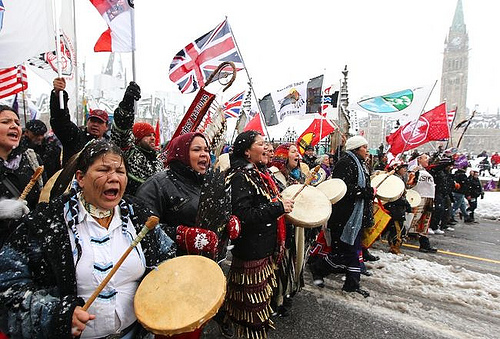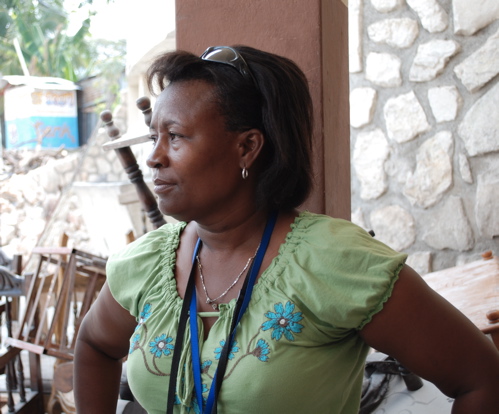Never in my life did I imagine that I would say the things that I am about to say here, that I would be making somber conclusions of disappointment, bitterness and criticism; conclusions based upon viewing the case of Aaron Swartz’s tragedy from a comparative, international point of view.
For 8 months last year I was actively monitoring, organizing protests, and giving presentations about and on behalf of the unfairly arrested and imprisoned Russian feminist political protest performance art group Pussy Riot (PR).
For those who are not familiar or don’t remember what happened with this art collective, let me briefly review the circumstances of Pussy Riot’s case:
Outraged by Vladimir Putin’s shameless usurping of constitutional powers and self-nominating for the third term Presidency of Russia, Pussy Riot staged a 46 second-long performance of a satirical protest song at the Moscow’s Temple of Christ the Savior, which was followed by a now iconic viral video.
A few days later in early March 2012, three members of the group were arrested. They faced charges of hooliganism and causing offense to believers, which carried a maximum punishment of up to 5 years of hard labor. They were also pressured to publicly repent and admit their guilt.
The trial of Pussy Riot women became a mockery of justice, with the Russian constitution and basic common sense trampled by judge and prosecutors. While members of the group refused to admit any wrongdoing, they offered their apologies to insulted believers, in case their feelings were indeed offended.
The trial was surrounded by an unprecedented loud and high profile international campaign in support of the arrested artists, in which numerous A-list celebrities such as Yoko Ono, Madonna, Sting, Paul McCartney, Bjork, and philosophers Henry Bertrand-Levy and Slavoj Zizek spoke out on behalf of the arrested. Pussy Riot received an International LennonOno Grant for Peace, were nominated for the Sakharov and Kandinsky prizes, and a documentary showcased at Sundance Festival and since purchased by HBO was made about them.
Despite the international uproar and clear lack of criminal intent, the artists were sentenced to 2 years of hard labor in punitive colonies. Perhaps the uproar helped to reduce the term of confinement to 2 years. One Pussy Riot member was later freed on a technicality, and two are still serving their term in Putin’s gulag.
As Pussy Riot’s farcical trial was going on, my American colleagues and I – artists, musicians, journalists, activists, and academics – sincerely believed that Putin’s regime was the most unfair, vindictive, unjust and oppressive of non-third world countries. We believed that we – Americans – could look at Russians from the vantage point of our democratic tradition, our trust in the rule of law and justice for all, and pity those poor Russians. We assumed that what happened to Pussy Riot in Russia could never happen in the U.S.A.
Even though I knew who Aaron Swartz was while fighting for justice for Pussy Riot, I never heard about his persecution by the bullying U.S. Attorney for Massachusetts Carmen Ortiz, on behalf of the U.S. government. I was not familiar with his legal ordeal happening right here in our very own country.
When I learned about the prosecution of Aaron and his resulting suicide I was filled with shock and shame. It was hard to believe that Putin’s oppressive, authoritarian legal machine went easier against 21st century Russian political dissenters, than the U.S. legal system went against Aaron Swartz!
But the facts were astonishing: Pussy Riot never looked at 35 to 50 years in jail, and were only sentenced to two years, and so far all of the collective’s members have survived their ordeal.
Aaron Swartz, in our democracy and under our newly elected “good” democratic president, was subjected to prosecutorial bullying and harassment, lack of flexibility, compassion and understanding on the part of the overreaching and vengeful U.S. Attorney Carmen Ortiz, an appointee of our “good” president.
Suddenly it was apparent that in the race to brutally persecute political activists, Russia came in second.
It used to be that when Russian dissidents were persecuted by their government, they turned to America for help. But to whom could American dissidents turn? Who was there to help beleaguered Americans? For American dissidents like Aaron Swartz the world was a hopeless and lonely place, and the cavalry led by Madonna and Sting was never coming to the rescue.
Of course the comparatively lenient treatment of Pussy Riot by the court could be explained by the traditional stupidity and slow-mindedness of the Russian judicial system, which in its retarded inefficiency was unable to unleash the full power upon the punks of Pussy Riot, but hey! That was their luck, luck that Aaron Swartz did not have.
Let me be specific about comparing the action of Pussy Riot to the action of Aaron Swartz, as on the surface they seem quite different. From a cultural point of view, Pussy Riot’s guerilla performance and Swartz’s urban guerilla action of stealing JSTOR’s data through MIT’s computer closet both contained classical elements of political action and performance art. While Pussy Riot can be viewed as bona fide conceptual performance artists, Aaron’s alleged “crime”, his alleged “felony” was also nothing more than a jest, a performance action, antics meant to attract attention to the lack of protection of scholarly data, and to the notion Aaron passionately believed in: that scholarly data, such as that found on JSTOR, has to be free for all. It was a calculated, deliberate performance action involving an elaborate scenario with real life props: penetrating the closet, installing the computer, hacking MIT and JSTOR’s systems, and complete with a carnivalesque disguise: a bike helmet as a mask, followed by his arrest and the subsequent return of the stolen data.
The benevolence of Aaron’s action was underscored by the fact that his attempt to hide his identity behind a bike helmet was rather laughable, buffoonish, and he eagerly returned the stolen data as his point had been made. He never planned to personally enrich himself as a result of his actions. He rather used his act as a pulpit, a soapbox to attract attention to the issues he considered vitally important for him and for society.
Like Pussy Riot he was ready to put his comfort on the line for his beliefs, and like Pussy Riot he took upon himself the role of “holy fool,” of obscene jester and naïve savant speaking truth to power from the pulpit of his idealistic innocence.
In conclusion I would like to share one rather somber observation regarding Aaron and the hacker community. Yes, there was a great deal of chest beating and outrage among the members of the geek community upon learning of Aaron’s tragic death. Yes, he was popular and beloved, but where were they, the almighty hackers en masse supporting him the way artists and musicians came to support Pussy Riot? Where were the international celebrities and anarchists and cyberpunks and philosophers, NGOs and pro bono lawyers? How come he was quietly tortured to death in the plain view by Carmen Ortiz and her henchmen?
One answer is that Aaron was a strange bird – neither entrepreneur millionaire nor a guerilla hacker. He was an effete, sensitive, rich, successful, famous child of the elite, almost corporate, almost like another Sergey Brin and Mark Zuckerberg. Almost, but not quite, as he was a political activist, a “holy fool” speaking truth to power, a Don Quixote tilting at windmills. He was a dreamer and a radical.
But as a radical he was not a cyber-anarchist like Anonymous, he was not a barricade fighter. He was unique and therefore utterly alone.
And one can also say sadly that an effete, depressive, intellectual computer whiz kid is no match to seasoned political artists such as Pussy Riot, Ai Wei Wei, Banksy, or professional political activists like Julian Assange. He was not made or trained to withstand the incredible psychological pressure the American justice system can unleash upon an individual. He was fragile and he broke. He “fought the law and the law won…” to paraphrase Sonny Curtis and the Clash.






/https://www.thestar.com/content/dam/thestar/news/crime/2012/11/02/ashley_smith_no_evidence_of_wrongdoing_in_case_quebec_police_say/ashleyvideo.jpeg)
